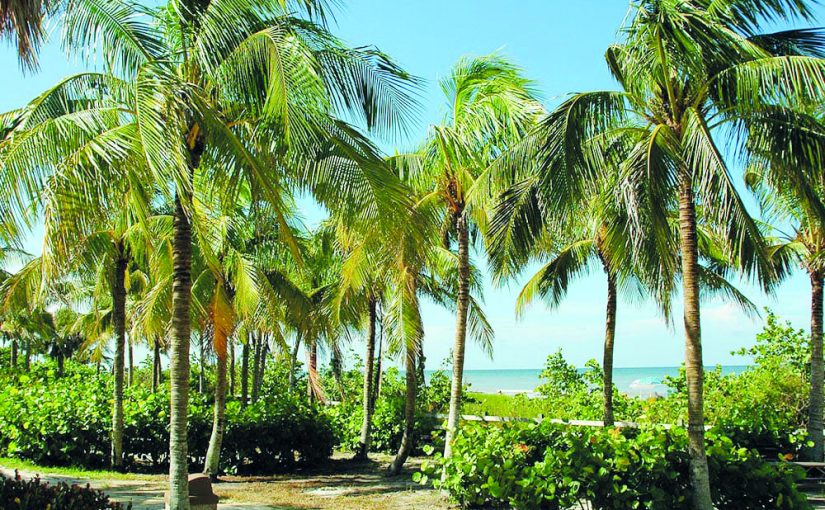Coconut trees… perceived as grass by law-makers?
By Adv Vinayak D Porob
THE provisions of the Goa, Daman and Diu Preservation of Trees Act, 1984 were under discussion and scrutiny as the government of Goa, by omitting section 1-A of the Act, excluded coconut trees from the definition of a tree under the Act. Goans have an emotional attachment towards coconut trees and no Goan will ever tolerate either the government or any individual gratuitously cutting coconut trees.
Botanically, coconut trees are not trees as they do not have branches like banana trees. Coconut trees grow in height as their trunk contains sclerenchyma fibres, which being a type of plant tissue grows vertically and does not allow the coconut tree to branch out. Sclerenchyma tissue provides strength and structural support to the plant organs as they form protective coverings around nuts and seeds.
Tree as defined under section 2(j) of the Goa, Daman & Diu Preservation of Trees Act, 1984 is “any woody plant whose branches spring from and are supported upon the trunk or the body and whose trunk or body is not less than 10 centimeters in diameter at a height of 1 meter from the ground level.” Certainly coconut trees do not have branches and hence do not fall within the purview of the definition of a tree as per section 2(j) of the Act.
Despite coconut trees not being defined as tree under the Act, Notices u/s 12-A of the Act to cut coconut trees alleging them to be in ruinous conditions are received by Goans. The legislature while amending the Act has amended section 12-A of the Act very smartly and the words any tree includes coconut trees is added while amending section 12-A of the Act. In view of the amendment carried out to the Act, I personally feel that the provisions of the Act have become self-contradictory as the definition of a tree as envisaged in section 2(j) of the Act clearly does not include coconut trees and more so as section 1-A which included coconut trees in the definition of a tree is omitted.
To cause more confusion adding the words “any tree includes coconut tree” in section 12-A of the Act has exposed the inconsistency in the provisions of the Act. By deleting section 1-A of the Act, the legislature in my opinion has clearly shown intent of excluding coconut trees from the purview of the definition of a tree. Now when coconut tree is excluded from the definition of a tree under the Act, can the legislature in the same Act without amending the definition of the term tree, include and consider coconut tree as a tree by relocating it in section 12-A of the Act by adding words “any tree include coconut tree”?
Section 9 of the Act describing the procedure for obtaining permission to fell or cut trees, contains the word “tree” without including coconut tree. From this it is apparent that to cut a coconut tree there is no procedure established under the Act and as the definition of tree under the Act does not cover coconut tree, according to me under the Act therefore there should not have been any permission required from the tree officer to cut a coconut tree.
The attempt made to relocate coconut tree from section 1-A of the Act to section 12-A of the Act in my personal opinion has created a confusion in the minds of the public whether coconut tree is a tree or not under the Act and as such the Act should be amended again in order to clarify whether coconut tree is a tree under the Act or not? Certainly coconut tree is a tree in my opinion and not a grass under the Indian Forest Act and as coconut tree is relocated from section 1-A to section 12-A of the Act, specific permission under the Goa, Daman and Diu Preservation of Trees Act, 1984 is required from the Forest Department to cut coconut trees in the State of Goa.
Though section 12-A of the Act contemplates a reasonable opportunity for the owner of the land to submit his objections, most of the Dy Collectors issuing notice u/s 12-A of the Act in the State of Goa only as a mere formality mark the attendance of the land owner and without effectively hearing the land owner, orders are passed to cut trees or branches purely on the basis of the report prepared mostly by experts, that is, the Zonal Agriculture Officer or a Forest Officer who are managed by the persons filing complaints under the Act. Since such cases are mostly political motivated most of the expert reports are managed and as the Dy Collectors are also coaxed to abide by the directions of the politicians, I feel in such cases landowners suffer in spite of providing evidence of the subject matter tree not being in ruinous condition.
(This article is the writer’s personal opinion and interpretation of the provisions of the Goa, Daman & Diu Preservation of Trees Act, 1984.)
